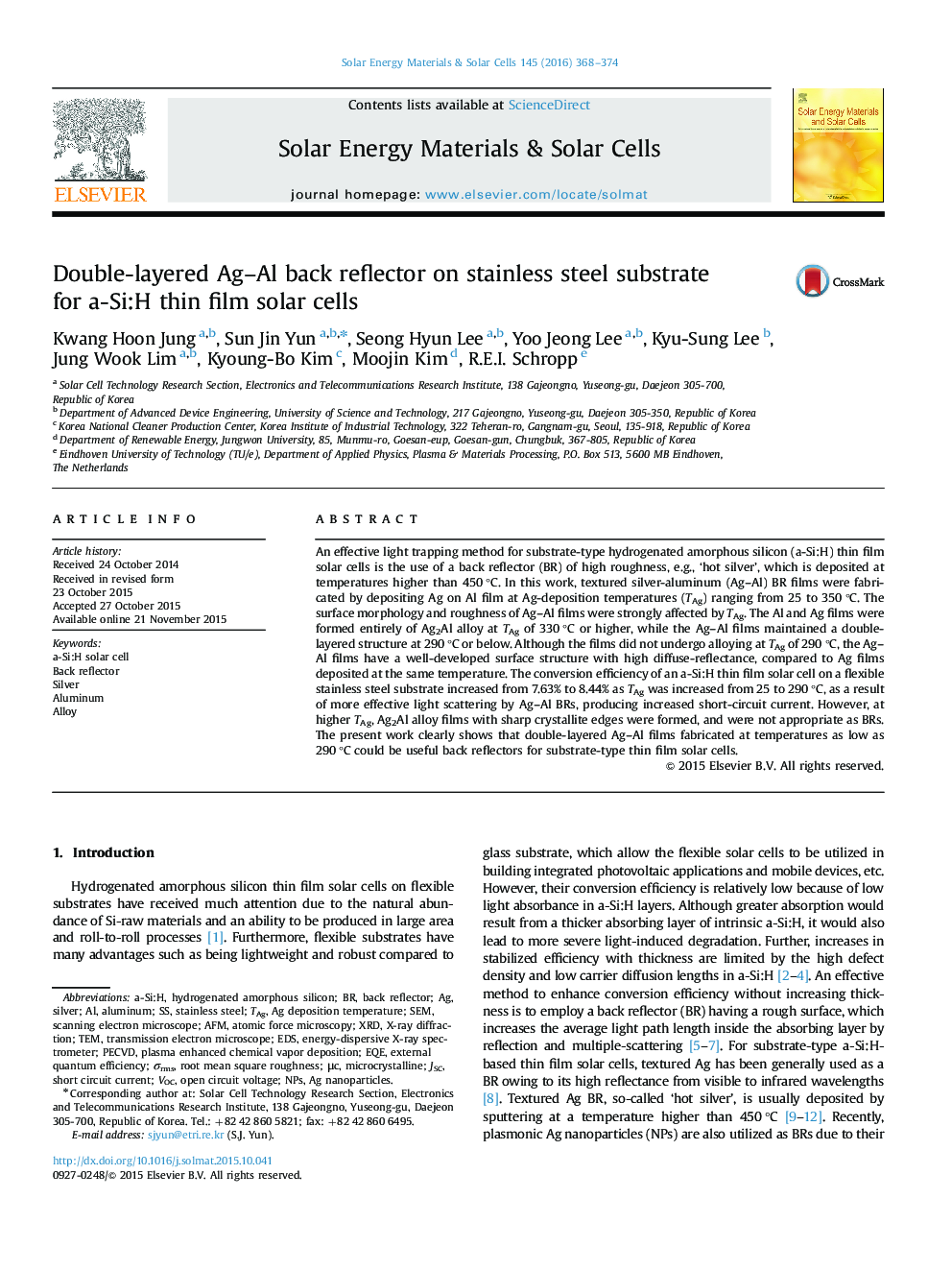| کد مقاله | کد نشریه | سال انتشار | مقاله انگلیسی | نسخه تمام متن |
|---|---|---|---|---|
| 77691 | 49295 | 2016 | 7 صفحه PDF | دانلود رایگان |

• A roughness-enhanced metal back reflector (BR) for a thin film solar cell was fabricated by depositing silver (Ag) on aluminum (Al) film.
• Surface roughness of the Ag–Al film is significantly influenced by the incorporation of Al into Ag.
• Morphology and optical properties of the Ag–Al film depend on the Ag deposition temperature.
• Hydrogenated amorphous silicon (a-Si:H) thin film solar cells were fabricated on rough surface Ag–Al BRs.
An effective light trapping method for substrate-type hydrogenated amorphous silicon (a-Si:H) thin film solar cells is the use of a back reflector (BR) of high roughness, e.g., ‘hot silver’, which is deposited at temperatures higher than 450 °C. In this work, textured silver-aluminum (Ag–Al) BR films were fabricated by depositing Ag on Al film at Ag-deposition temperatures (TAg) ranging from 25 to 350 °C. The surface morphology and roughness of Ag–Al films were strongly affected by TAg. The Al and Ag films were formed entirely of Ag2Al alloy at TAg of 330 °C or higher, while the Ag–Al films maintained a double-layered structure at 290 °C or below. Although the films did not undergo alloying at TAg of 290 °C, the Ag–Al films have a well-developed surface structure with high diffuse-reflectance, compared to Ag films deposited at the same temperature. The conversion efficiency of an a-Si:H thin film solar cell on a flexible stainless steel substrate increased from 7.63% to 8.44% as TAg was increased from 25 to 290 °C, as a result of more effective light scattering by Ag–Al BRs, producing increased short-circuit current. However, at higher TAg, Ag2Al alloy films with sharp crystallite edges were formed, and were not appropriate as BRs. The present work clearly shows that double-layered Ag–Al films fabricated at temperatures as low as 290 °C could be useful back reflectors for substrate-type thin film solar cells.
Journal: Solar Energy Materials and Solar Cells - Volume 145, Part 3, February 2016, Pages 368–374